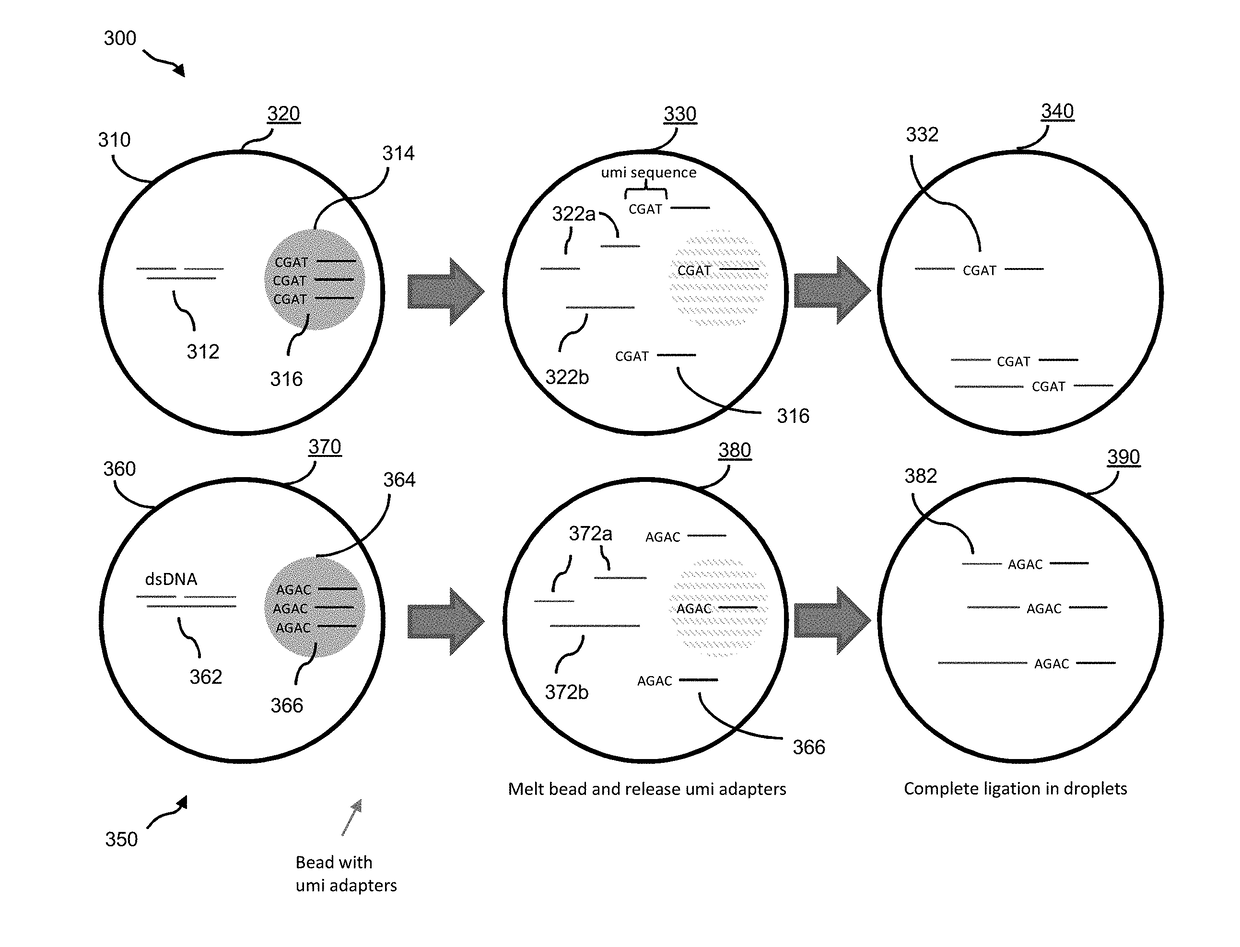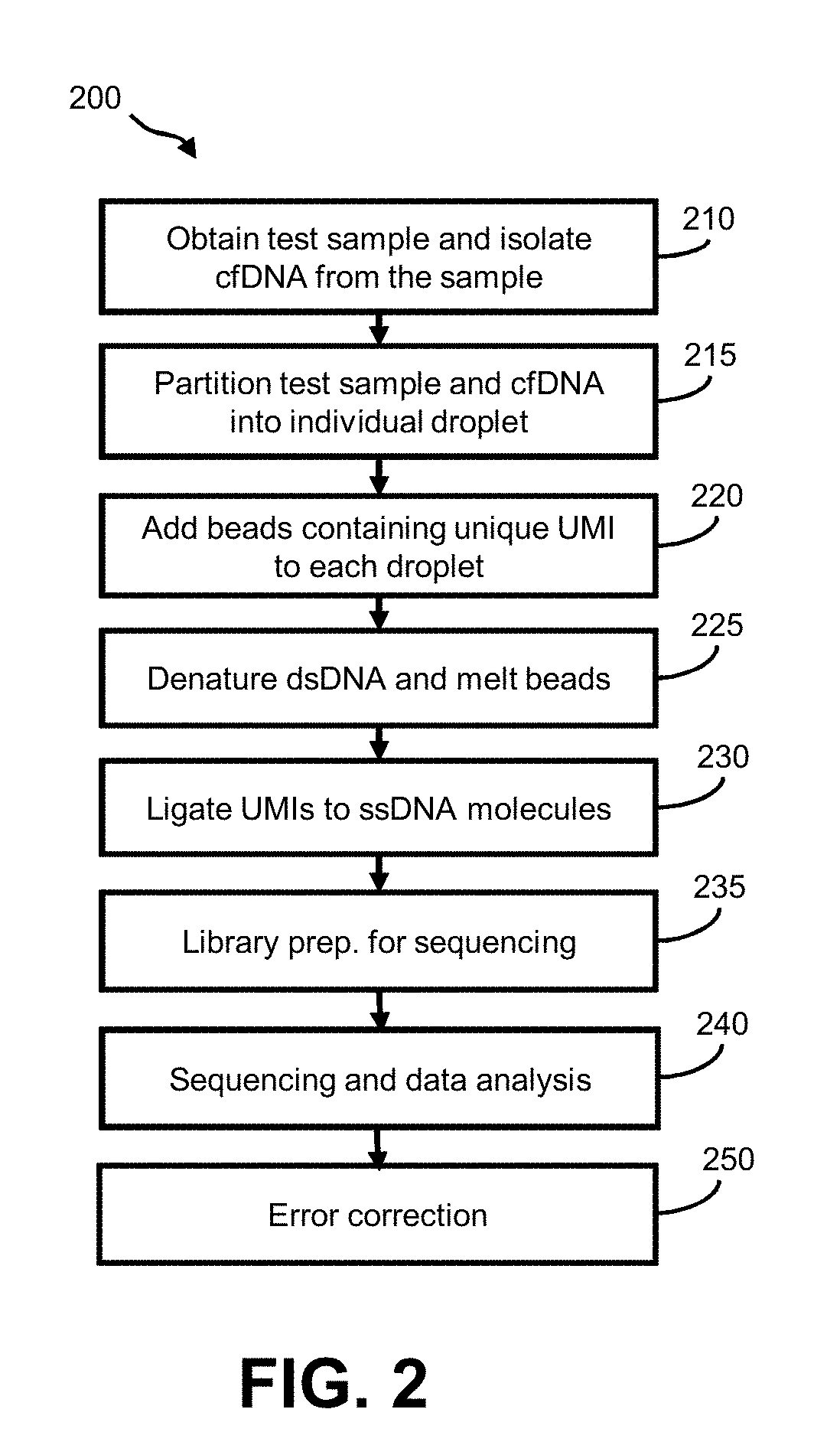Methods for single-stranded nucleic acid library preparation
a single-stranded nucleic acid and library technology, applied in the field of single-stranded nucleic acid library preparation, can solve the problems of over- or under-representation of particular variants, amplification bias, and difficulty in detecting and quantifying these variants using next-generation sequencing approaches
- Summary
- Abstract
- Description
- Claims
- Application Information
AI Technical Summary
Benefits of technology
Problems solved by technology
Method used
Image
Examples
Embodiment Construction
[0036]Aspects of the invention relate to methods for preparing and analyzing a sequencing library originating from a double-stranded DNA (dsDNA) sample isolated from one or more individuals, wherein the sample includes double-stranded DNA (dsDNA) and / or damaged dsDNA (e.g., nicked dsDNA). The subject methods facilitate the collection of information from dsDNA and damaged dsDNA (e.g., nicked DNA) molecules in a sample, thereby providing enhanced diagnostic information as compared to sequencing libraries that are prepared from dsDNA alone. For example, the subject methods facilitate determining whether single-stranded fragments originated from the same dsDNA fragment. In typical sequencing library preparation methods known in the art, this information can be lost in one or more steps of denaturation and / or amplification, or the single-stranded fragments that make up the dsDNA fragment can be lost during library preparation.
[0037]The present invention is directed, at least in part, to ...
PUM
| Property | Measurement | Unit |
|---|---|---|
| temperature | aaaaa | aaaaa |
| temperature | aaaaa | aaaaa |
| temperature | aaaaa | aaaaa |
Abstract
Description
Claims
Application Information
 Login to View More
Login to View More - R&D
- Intellectual Property
- Life Sciences
- Materials
- Tech Scout
- Unparalleled Data Quality
- Higher Quality Content
- 60% Fewer Hallucinations
Browse by: Latest US Patents, China's latest patents, Technical Efficacy Thesaurus, Application Domain, Technology Topic, Popular Technical Reports.
© 2025 PatSnap. All rights reserved.Legal|Privacy policy|Modern Slavery Act Transparency Statement|Sitemap|About US| Contact US: help@patsnap.com



